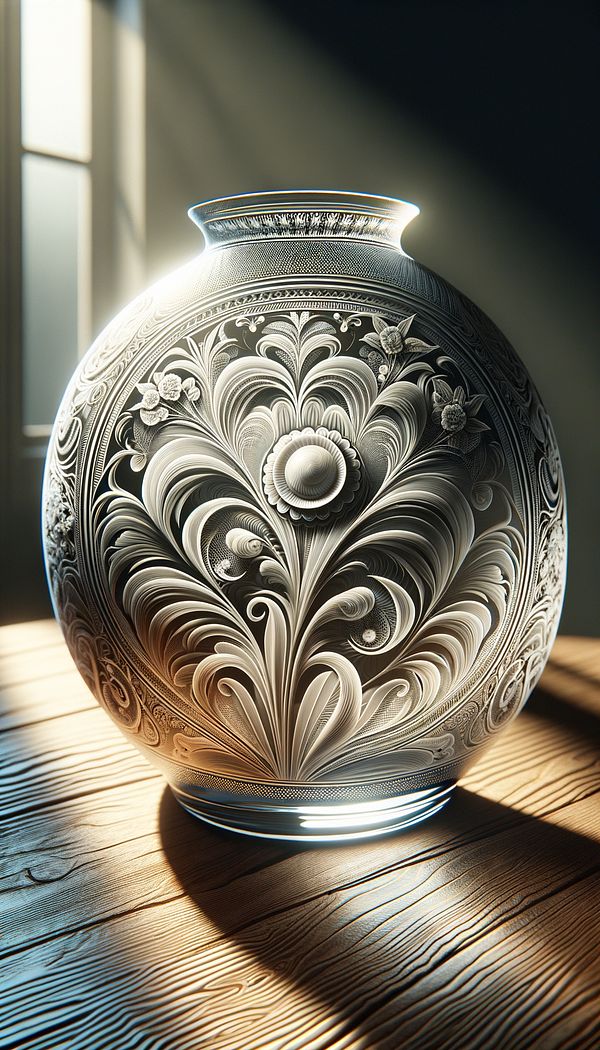What is Intaglio?
Intaglio is a decorative technique where the design is engraved into a material.
Description
Intaglio, derived from the Italian word for 'engraving', is a decorative technique that dates back to the Renaissance era, though its practice can be traced even further into history. Unlike relief techniques where the design protrudes from the surface, intaglio involves engraving or cutting into the surface of a material to create a design. This can include carving into stone, etching into metal, or engraving on glass, among other mediums. The resulting artwork or decorative piece features indented patterns, images, or inscriptions that can only be perceived through the differences in depth rather than raised surfaces.
In interior design, intaglio is often found in accessories such as decorative items, wall art, and furniture detailing. It can also be applied to architectural elements, adding a layer of complexity and historical depth to both modern and traditional spaces. Intaglio's versatility and timeless appeal lie in its intricate details and the skill required to create them, making each piece unique. In recent years, there has been a resurgence in the appreciation of craftsmanship, including intaglio, in interior design, celebrating the beauty and intricacy of hand-crafted objects.
Usage
In an interior design context, intaglio might be seen on a statement piece of furniture like a beautifully engraved cabinet door, as artistic details in custom glasswork, or on accent pieces like metal vases or stone sculptures that feature engraved designs. It adds an element of luxury and craftsmanship, blending art history with contemporary or classical interior themes.
FAQs
-
How is intaglio different from relief?
Intaglio involves engraving designs into the surface of a material, creating indented patterns, whereas relief techniques create designs that protrude from the material's surface.
-
Can intaglio be used on any material?
While traditionally associated with stone, metal, and glass, intaglio can be applied to a variety of materials, provided the surface allows for precise engraving.
-
Is intaglio only found in traditional interiors?
No, intaglio can be integrated into both traditional and contemporary interior design schemes, adding a touch of elegance and historical depth.
-
How does intaglio contribute to interior design?
Intaglio adds texture, detail, and an element of craftsmanship to interiors, enhancing the overall aesthetic through its intricate and unique designs.
Practical Application
When incorporating intaglio into your design, consider the scale and location of the piece. Subtler, smaller applications can add an elegant touch to a room without overwhelming the space. For a feature piece, look for items with a significant amount of detail and craftsmanship to draw the eye and serve as a conversation starter. Always consider lighting, as well-placed lights can enhance the shadows and depths of the intaglio work, highlighting its beauty and intricacy.
-
Architectural Elements199 articles
-
Furniture Types599 articles
-
Decorative Techniques322 articles
-
Art & Sculpture30 articles
-
Fabrication & Craftsmanship133 articles
-
Parsons TableA Parsons table is a simple, rectangular table characterized by square legs that are the same thickness as the tabletop.
-
Built-inBuilt-in refers to any feature or piece of furniture that is permanently integrated into a room's structure.
-
StrippingStripping in interior design refers to the process of removing layers of paint, wallpaper, varnish, or other coatings from surfaces.
-
Louis XIVLouis XIV style, also known as Louis Quatorze, is a French design style that emerged during the reign of King Louis XIV.
-
American OrientalAmerican Oriental is a design style that merges traditional American design elements with Oriental influences.
